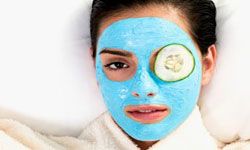The field of dermatology will always be a busy one, given the simple fact that no two people seem to have exactly the same skin type. The cosmetics industry banks on this, offering skin care products for every skin type imaginable, from excessively dry to oily and everything in between.
Oily skin can strike anyone, regardless of age, ethnicity, gender or geographic location. A myriad of factors cause or exacerbate oily skin, including humidity, a poor face cleansing regimen and even exposure to cigarette smoke. Some people are genetically predisposed to oily skin, whereas many others experience a hike in oil production at certain stages in their life, such as during the teenage years. Additionally, women who are pregnant, going through menopause or taking birth control pills are especially susceptible to oily skin.
Advertisement
What are the effects of having oily skin? People who suffer from it might feel greasy a few hours after a shower. Women with oily complexions might find that their makeup wears off more easily, requiring them to reapply it multiple times per day. Oily skin is also a magnet for dirt and dust, which quickly accrue and clog pores. Clogged pores lead to acne, blackheads and other skin imperfections.
Think all hope is lost? HowStuffWorks has put together a list of tips for cleansing oily skin, debunking some well-known skin care myths along the way. And there is some good news for oily skin sufferers. Oil-slicked complexions tend to stand the test of time better than dry ones, resulting in a younger-looking appearance with fewer lines and wrinkles.
